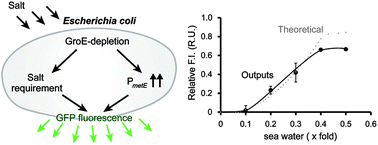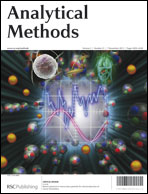We have developed a bacterial salt sensor by multiplication of the phenotypes in GroE-depleted Escherichia coli. Depletion of GroE, an essential chaperonin protein, induces many independent phenotypes, including the activation of a metE promoter, salt requirement for growth, and eventual cell death. We demonstrated that the cell number at growth cessation after GroE depletion was proportional to the salt concentration. To develop a bacterial salt sensor, the dependence of the cell growth on salt concentration was combined with superfolder green fluorescent protein (GFP) expression under the metE promoter. The bacterial salt sensor produced fluorescence signals in response to salt concentrations within the medium in a quadratic manner. The bacterial sensor responded to other monovalent or divalent cations and exhibited maximum response at concentrations that produced similar levels of total charge. The bacterial sensor did not respond to sugars that create an osmotic pressure, demonstrating its specificity for ion sensing. Finally, we demonstrated that the bacterial device was able to respond to sea water concentrations within the medium. We have thus developed an effective bacterial salt-sensing device. Our results also provided insight into what induces the salt requirement phenotype of GroE-depletion.

You have access to this article
 Please wait while we load your content...
Something went wrong. Try again?
Please wait while we load your content...
Something went wrong. Try again?


 Please wait while we load your content...
Please wait while we load your content...